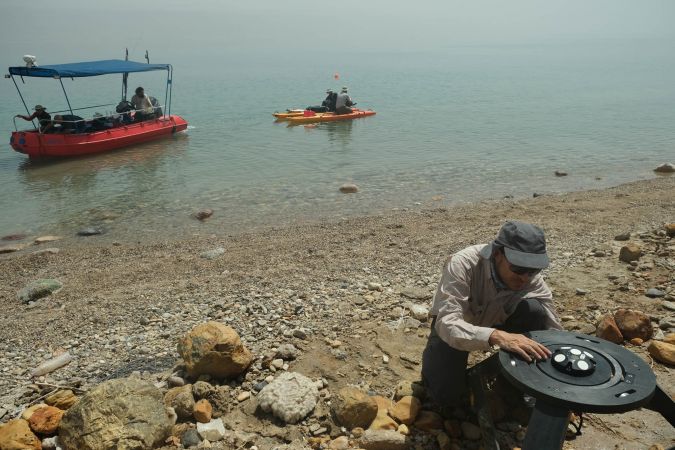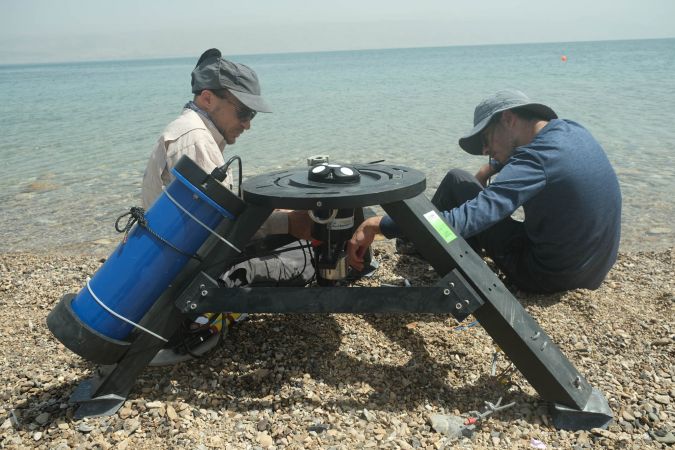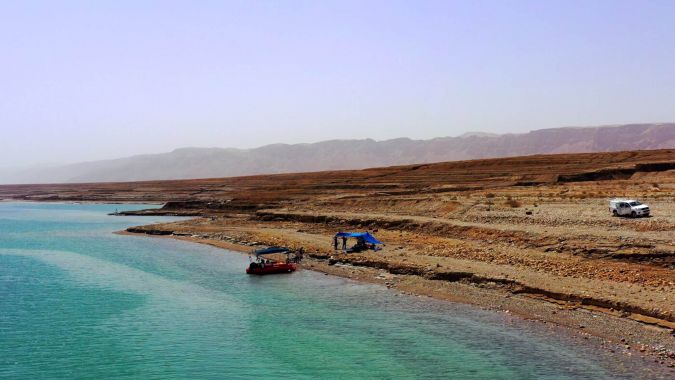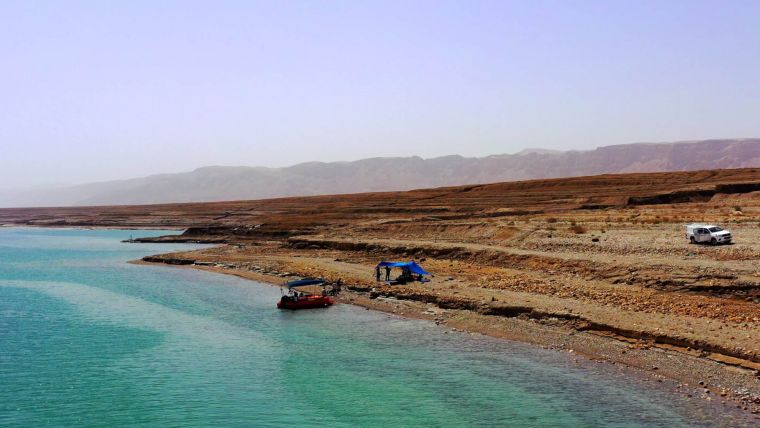Dead Sea coastal erosion research to protect coastlines worldwide
Coastal erosion is reshaping our world, threatening homes, industries and culturally important places. By taking advantage of the unique conditions in the Dead Sea and leveraging modern ADCP technology, scientists in Israel have explored how wind-driven waves and currents shape coastlines and transport sediments along shores. The research could help improve the design of boulder-based breakwaters, which are placed offshore all across the world to absorb wave energy and mitigate erosion.
Every year, around 24% of the world’s sandy shoreline erodes, causing significant financial loss from damage to property and infrastructure. With around 40% of the global population living within 100km of a coast, erosion presents a real and immediate challenge. Coastal erosion is a costly affair: in the USA alone, it causes an estimated US$500 million in property loss and damage every year.
The cutting-edge environmental research in Israel took advantage of new technologies and the unique environment of the Dead Sea to better understand the processes behind coastal erosion and sediment transport. As Haggai Eyal, a PhD candidate at the Hebrew University of Jerusalem, explained: “Understanding coastal erosion and the transport and sorting of coarse sediments along shores is highly important for assessing coastal stability.” Eyal was supervised by Prof. Nadav Lensky from the Geological Survey of Israel and Prof. Yehouda Enzel from the Hebrew University of Jerusalem.
Ideal conditions
Eyal’s PhD focused on the fluvial (relating to rivers) and coastal movements of sediments in the Dead Sea, a hypersaline lake located between Israel, Jordan and the West Bank. The Dead Sea is primarily fed by the Jordan River and does not drain or discharge to the ocean, making it a terminal lake. Sediments from the Jordan River and other channels make their way to the Dead Sea through a variety of sediment transport processes.
During winter storms, fluvial channels supply unsorted sediments to the lake and waves transport these sediments from the channel mouth along the shore, creating berms – beach ridges that extend along the shore. Then, during the drier and hotter summer months, the lake level drops about one metre. As Eyal explained, the dramatic seasonal drop in water level means that the berms are unique to each winter season, creating an environment where sediments from each storm are preserved separately. This is unlike other areas where the water level is relatively stable from one season to the next.

Atmospheric and oceanographic processes
To understand the role that different atmospheric and oceanographic processes play in coastal erosion and to apply that knowledge to other parts of the world, real-world oceanographic measurements were required. “This is where the science of coastal erosion is challenging, specifically where waves break,” said Prof. Lensky. “You need the wind measured properly, which is easy enough, but then you need to measure currents and waves, which is very hard to achieve.”
Nortek’s Signature ADCPs were used to provide crucial quantitative measurements of the currents throughout the water column and directional waves simultaneously. Eyal explained: “The ability to measure directional waves with the Signature1000 enabled us to correlate the wind direction and the wave directions. The interaction between waves and coasts and the angle between them dictates the amount of longshore sediment transport.”
Using the Signature1000’s three-dimensional current measuring and wave profiling capabilities, the researchers were able to measure nearly the full water column. To account for the area closest to the seabed missed by the Signature because of its up-looking orientation, the researchers filled the gap by measuring currents using an Aquadopp 300 m current meter.
The measurements from the study provided some key insights into the processes that dictate transport in the Dead Sea. “We see that the transport is dictated mainly by the waves, not the current,” said Eyal. “This combination of using measurement of wind as atmospheric drivers, directional waves and current profiles and turbidity profiles using the Nortek Signature1000, and motion measurements from smart boulders is unique. It allowed us to quantify the transition of momentum from wind to waves to coastal erosion and gravel transport along the coast,” he added.

Application to the rest of the world
The study was published in Geophysical Research Letters in collaboration with researchers from the University of California in the USA and Technische Universität Braunschweig in Germany. The paper offers insights into sediment transport processes beyond the Dead Sea. Using the observations from the study, the researchers demonstrated how sediment sorting is directly related to the wave climate. They developed a new model for quantifying the wave height needed to move a given mass of gravel and formulated how the distribution of wave heights during a storm sorts gravel along the shore.
This information is helpful in designing boulder-based breakwaters: structures built from boulders placed offshore that are intended to absorb wave energy. “You want these boulders to stay in place. In our research, we quantified the size of the boulders that move at a certain wave intensity distribution,” said Prof. Lensky. “If we properly understand the physical relation between the waves and the underlying processes that move the boulders, you can generalize these processes to other regions.”
Lensky noted the importance of repeating their findings in other areas. “To verify that these insights are valid for other coasts, we need to have similar measurements from coasts with a different wave climate,” he added.















